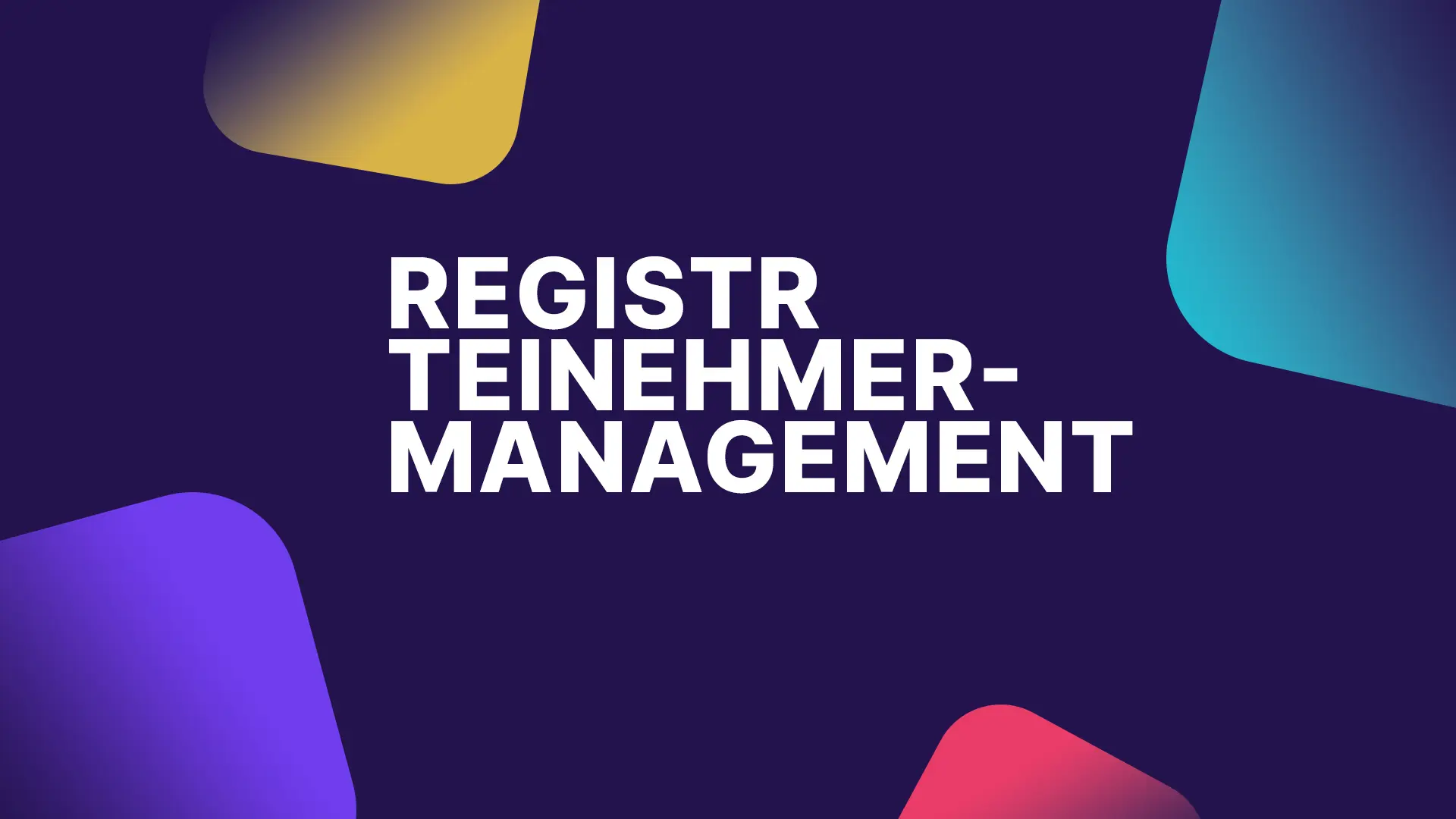A registration form is often the first active point of contact between invited guests and an event. This is the moment when people decide whether to complete their registration or opt out of attending. A well-designed registration form therefore not only influences the conversion rate, but also the user experience and the quality of the data collected later. Whether it’s a live event, hybrid event or virtual meeting, an optimised registration process creates transparency, trust and efficiency.
The importance of a professional registration form in event management
A registration form is not just a digital document for data collection. It fulfils a communicative and organisational function. Participants perceive the form as part of the overall event experience. It also forms the basis for event planning, ticketing, participant management and communication. A user-friendly design signals professionalism, structure and appreciation. For companies and organisations, it is therefore a strategic tool that digitises internal processes and reduces effort.

10 tips for efficient event planning
Efficient event planning: Discover 10 practical tips for successful events – from budget planning and digital tools to participant management.

registr – Participant registration & management
Participant registration for events made easy: ✅ GDPR-compliant, ✅ corporate look, ✅ mobile-friendly. Request a demo now!
Best practices for a user-friendly registration form
For a registration form to work as efficiently as possible, it should be clearly structured and only request necessary data. A streamlined registration form reduces cognitive load and increases the completion rate. The ideal structure is one with clearly legible labels, logical question blocks and an understandable sequence. Mandatory fields should only appear where they are really needed. In addition, the registration form should be fully optimised for mobile devices, as many users register via mobile devices. User-friendly navigation reduces queries, ensures clarity and helps to prevent abandonment.
Dynamic form logic for personalised registration experiences
A modern registration form should adapt to the user’s responses. Dynamic form logic ensures that only relevant fields appear, while unnecessary input fields are hidden. This provides a personalised experience and prevents users from feeling overwhelmed by too many inputs. Examples include personalised session bookings, additional information on special requirements, or catering requests. This type of digital registration looks professional and creates a positive first user experience.
Security and data protection in the registration process
A registration form must comply with legal data protection requirements, especially in the B2B environment. GDPR-compliant processing, transparent declarations of consent, encrypted transmission and hosting within Europe create trust. Participants must be able to understand what data is collected and why. Companies also benefit from roles and authorisation systems that only give authorised persons access to sensitive data. A registration form with high security standards strengthens trust in the entire event.

How to manage events efficiently: an overview of methods and tools
Manage events efficiently—with proven tools, clear processes, and a practical step-by-step plan.

Event management software comparison: categories, use, and providers
Which event management software is right for your use case? We show you categories, possible applications, and suitable tools.
Automate processes instead of managing them manually
Event processes can be automated using a digital registration form. Confirmations, tickets, invoices and QR codes can be generated automatically. Follow-up messages can be sent on a time-based or trigger-based basis. This minimises manual effort and ensures that the organisation always has access to up-to-date real-time data. Automation ensures that event teams can work in a scalable and efficient manner while providing participants with a modern user experience.
Registration form requirements per event format
The content of a registration form varies depending on the type of event. For live events, the focus is on topics such as hotels, allergies, or travel planning. Hybrid events require selection fields for participation type or booking options. Virtual events require technical queries such as device type, language settings, or session selection. A professional registration tool should be able to flexibly map these requirements and simplify recurring forms.
How a good registration form prevents dropouts
Many registrations fail before they are completed. Abortions are caused by unnecessary complexity, lack of mobile optimisation or unclear wording. A good registration form therefore takes the following points into account:
- Clear communication of the benefits of the event
- Short loading times and barrier-free usability
- Progress bar for orientation
- Auto Fill and Single Sign On options
- Reminder for incomplete registrations

Professional guest management: the underestimated lever for customer loyalty
Structured guest management strengthens customer loyalty, with tools, use cases and tips for your events. Inform now!

Why good participant management determines the success of your event
Professional participant management ensures smooth events and satisfied guests. Find out what matters most.
registr as an integrated solution for registration and participant management
With registr, plazz ag offers a solution that enables companies to create customised registration forms without programming. In conjunction with the Mobile Event App and Polario, this creates a holistic process that combines registration, communication, event planning and participant management. Thanks to its modern architecture, intuitive operation and high security standards, the system is suitable for internal events, hybrid events and large conferences. Around 400 B2B customers, including numerous corporations, already use the solution for digital and hybrid projects.

registr – Participant registration & management
Participant registration for events made easy: ✅ GDPR-compliant, ✅ corporate look, ✅ mobile-friendly. Request a demo now!
Conclusion
A registration form is a key component in event communication and the digital corporate world. It influences participation rates, user experience, organisational effort and brand perception. Clear structures, intelligent functions, automation and high security standards make it possible to design the registration process efficiently and improve it sustainably. Those who view the registration form not just as a mandatory task, but as a strategic part of the event journey, increase quality, engagement and effectiveness.
Frequently asked questions (FAQ)
What should be included in a registration form?
Only relevant data such as name, contact details and event-related information. Less is often more.
How can a registration form be made user-friendly?
Through clear structure, mobile optimisation, understandable labels and reduced mandatory fields.
How can registration dropouts be reduced?
Through short loading times, clear benefits, progress bar, auto-fill and reminders for incomplete registrations.
Which software is suitable for event registration?
Tools such as registr enable dynamic forms, automation and secure data processing.


